From Silicon Valley to Silicon Island
Connecting the Dots Between the American and Taiwanese Chip Industries
Micro-chips and Macro-problems
A worldwide shortage of semiconductor chips during the COVID-19 pandemic shone a spotlight on the outsized geopolitical and economic significance of the tiny island nation of Taiwan. The island is home to the world’s largest contract chipmaker, Taiwan Semiconductor Manufacturing Corporation (TSMC), the world’s largest contract electronics manufacturer, Hon Hai Precision Industry Ltd., also known as Foxconn and one of the world’s largest fabless chip design companies, MediaTek.
Taiwan’s strength in semiconductor manufacturing is described by some as a “Silicon Shield” against potential Chinese aggression. The history of how this tiny island nation with a population of just over 23 million and a GDP that represents just 0.6% of the world economy grew to become the epicenter of the global semiconductor industry and a linchpin of the world economy sheds light on the surprisingly close and common origins of the American and Taiwanese semiconductor industries.
“You can’t connect the dots looking forward; you can only connect them looking backward.
Steve Jobs
Connecting the dots backward from Taiwan’s early semiconductor visionaries to legendary American founders like David Packard, Bill Hewlett, Bob Noyce and Gordon Moore highlights the central role of one individual - Fred Terman, and one American institution - Stanford University.
Professor Frederick Terman, an acclaimed expert in the then emerging field of radio engineering served as Dean and later, Provost of Stanford University. He is widely regarded as the father of what came to be known as Silicon Valley.
It is fascinating to realize that a single individual was able to influence - directly or indirectly - the creation of an entire industry that would become the bedrock of the modern digital age, first in the United States, and a couple decades later, oceans apart, in Taiwan. It makes one wonder: how would modern computing have evolved if not for the contributions of a single individual?

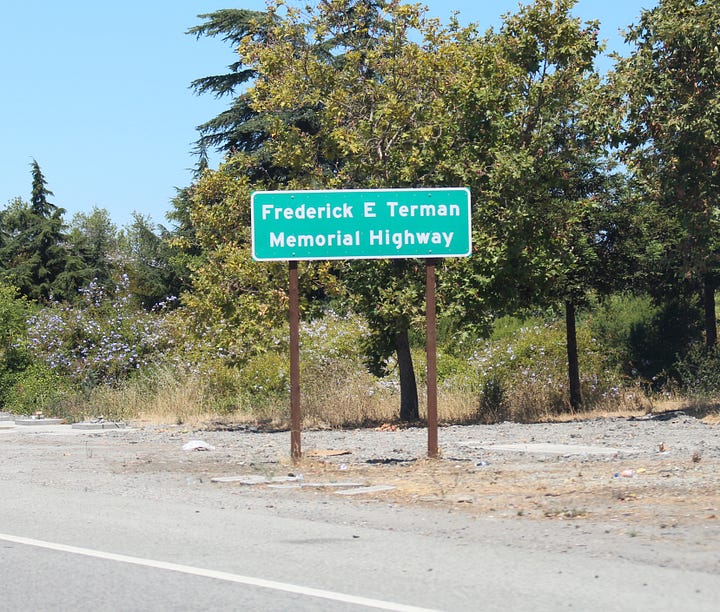
Creation of Hewlett-Packard (1939)
Professor Terman was known to encourage his students to become entrepreneurs and start local businesses which could in turn create employment opportunities for local engineering graduates. He was responsible for reuniting a couple of Stanford engineering graduates, William Hewlett and David Packard who took his summer seminar on audio oscillators. With encouragement from their professor, Hewlett and Packard would go on to start their eponymous corporation in the San Francisco Bay Area. Terman even suggested to them their first marketable product - an audio oscillator based on the principle of negative feedback that he himself had taught them! HP became the first major technology company in what would be known as Silicon Valley.
Without the encouragement of Fred Terman, would Hewlett and Packard have created HP in the San Francisco Bay Area? Without HP, would Silicon Valley exist, or at least, would it exist in its current form?
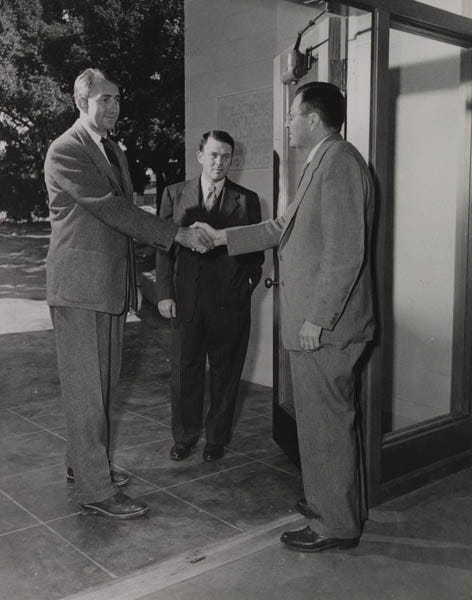
Creation of Shockley Semiconductor and Fairchild (1956-7)
In 1956, Professor Terman lured his friend William Shockley, co-inventor of the transistor, to move back to Palo Alto from the East Coast and start Shockley Semiconductor Laboratories. Terman believed that the creation of a research institution in the Bay Area led by someone of Shockley’s stature would benefit Stanford and its students. Shockley hired some of the most brilliant young minds in the then nascent field of semiconductors who would go on to create Fairchild Semiconductor just a year later in 1957.
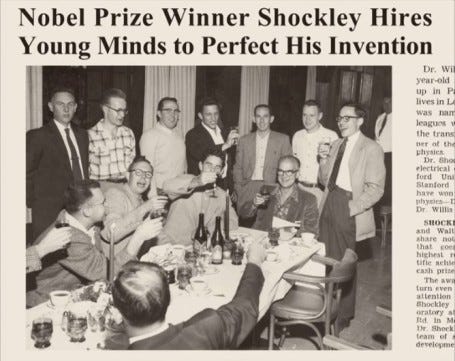
Fairchild alumni, including Bob Noyce and Gordon Moore later founded several dozen semiconductor companies in the Bay Area, including Intel which would go on to become the largest semiconductor company in the world.
Had Fred Terman not encouraged his friend William Shockley to move to Palo Alto, would Shockley Semiconductor have been created in California? Without Shockley Semiconductor in California, would Bob Noyce have led seven other technologists to leave and create Fairchild? And without Fairchild, would there have been an Intel and scores of other semiconductor companies in the Bay Area?

Creation of ITRI in Taiwan (1974)
Another student of Professor Terman, lesser known, but a contemporary of Hewlett and Packard, was Wen-yuan Pan. Pan left his home in mainland China in the 1930s and sailed across the ocean to the United States, eventually making his way to Palo Alto to also study radio engineering under Professor Terman, along with Hewlett and Packard!
Wen-yuan Pan even co-authored a paper on amplifiers with Professor Terman and Bill Hewlett. After obtaining his PhD in 1940, he went on to have a distinguished nearly three-decade long career at the Radio Corporation of America (RCA). But Pan’s most enduring legacy would be his role in devising and executing the plan that made Taiwan a silicon economy, home to the largest chip manufacturer in the world.

In 1974, Pan convinced Sun Yun-Suan, the Taiwanese minister of economic affairs to approve a $10M, four-year plan that would establish a semiconductor industry in Taiwan. His work led to the founding of a semiconductor research division under the Industrial Technology Research Institute (ITRI). Pan was instrumental in establishing a technology transfer agreement with RCA and recruiting the first 37 Taiwanese engineers to engage in a yearlong training program at RCA in the United States. These engineers returned to Taiwan and built a government funded 7-micron chip fabrication facility that would become the start of Taiwan’s semiconductor industry.
Just as the Fairchild alumni would go on to start numerous semiconductor companies in Silicon Valley, Pan’s group of initial recruits would go on to constitute almost the entire senior leadership of Taiwan’s semiconductor industry, including Ming-Kai Tsai, who led the creation of MediaTek, one of the world’s largest fabless semiconductor design companies. Pan grew up in Mainland China and studied and later worked in the United States long before the creation of Taiwan. He never studied, settled, or worked for pay in Taiwan but is honored as the father of Taiwan's semiconductor industry.
Had Wen-yuan Pan not found his way from China all the way to Stanford in the 1930s with interest in radio engineering, would he have met a mentor like Fred Terman and colleagues like Bill Hewlett and Dave Packard? Without the support of Professor Terman, would he have joined Radio Corporation of America (RCA)? Without the connections he made at RCA, would he have been able to strike a deal to transfer semiconductor technology from RCA to Taiwan?

Creation of TSMC (1987)
A decade later, Sun Yun-Suan, who then was the Premier of Taiwan, convinced yet another Chinese American executive to take the helm of ITRI and help map the future of the semiconductor industry in Taiwan. That executive was Morris Chang, who also happened to have walked the same hallways of Stanford University as Pan Wen-yuan, David Packard and William Hewlett a couple decades before him. Morris Chang earned a PhD in Electrical Engineering from Stanford and was taught by none other than William Shockley himself and other faculty who were also personally recruited by Fred Terman.
In 1987, ITRI, led by Morris Chang, spun off a chip manufacturing facility, transferring fabs, equipment, technologies, and an initial group of engineers to the newly formed company. This venture was none other than Taiwan Semiconductor Manufacturing Company (TSMC), now the largest semiconductor manufacturer in the world.
Morris Chang, Bob Noyce and Gordon Moore were contemporaries - while Chang was taught by Shockley at Stanford, Noyce and Moore worked for Shockley directly. In 1958, Chang (27), Moore (29) and Noyce (31) attended the International Electron Devices Meeting (IEDM), where they had dinner together and went out drinking on the cool, December nights in Washington DC. Little did they know then, that the three of them would go on to create the two largest and most influential semiconductor manufacturers in the world - over many decades and across two different continents!
End of Globalization (?) or American Homecoming (?)
The seeds of Taiwan’s future semiconductor dominance were sown in the United States in the 1930s and 1940s, by Chinese student immigrants like Wen-yuan Pan and Morris Chang, long before the creation of modern day, independent Taiwan in 1949.
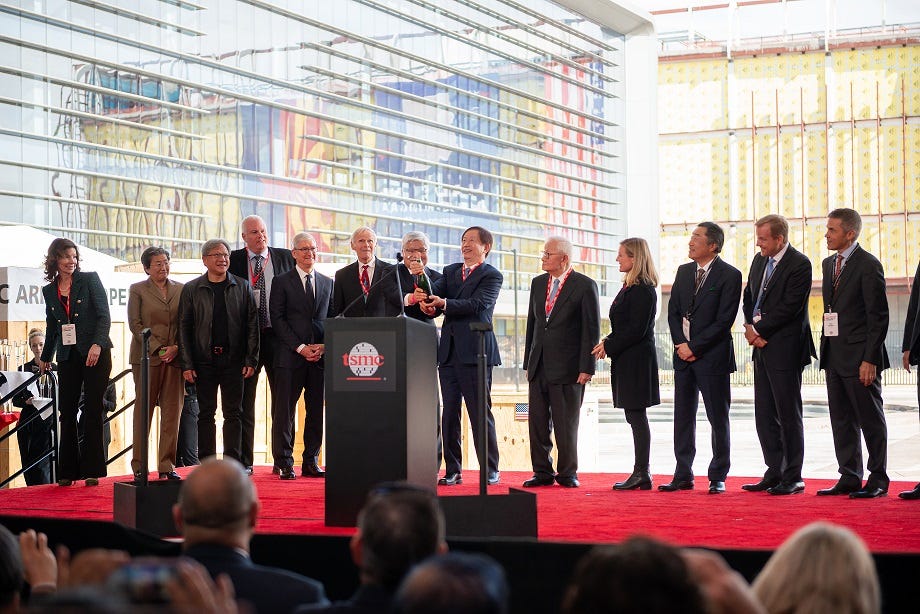
“Twenty-seven years have passed, and the semiconductor industry witnessed a big change in the world, a big geopolitical change in the world. Globalization is almost dead and free trade is almost dead. A lot of people still wish they would come back, but I don’t think they will be back.”
Morris Chang, speaking about TSMCs manufacturing expansion in America, Dec. 2022
Geopolitical tensions post the COVID-19 pandemic in 2020 forced TSMC to begin expanding their manufacturing footprint outside Taiwan for the first time in decades, when they decided to build a massive semiconductor fab in the deserts of Arizona, just a few miles from Intel’s largest semiconductor manufacturing base in the United States. Morris Chang, who publicly opposed this move, later said he understood the reason for the move, but lamented it as a sign of the “end of globalization” (Link).
Perhaps an alternate way to view TSMCs manufacturing expansion in Arizona is not so much as the end of globalization but more as the homecoming of a technology that was born in America and generously shared with the rest of the world - by American institutions and visionary men like Fred Terman - for the benefit of all humanity.

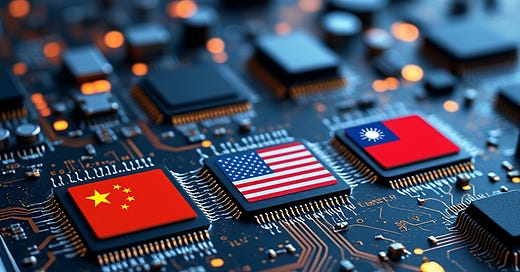




Amazing article. What do you think needs to happen in India to compete with the likes of US / China / Taiwan in the next 20 years?
Lessons there for India